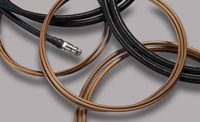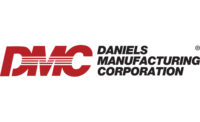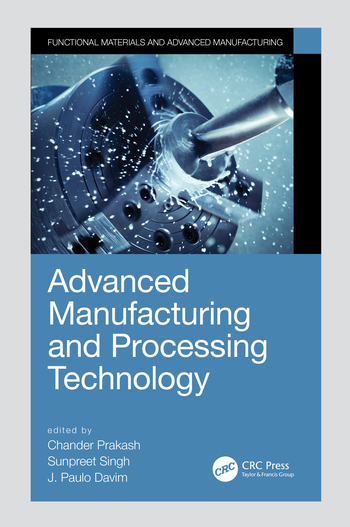Arrow Electronics--a producer of component assemblies, discrete wiring, simple and complex harness assemblies, molded-on cable ends and mechanical subassemblies--has been undergoing a transformation. The company has been implementing lean manufacturing techniques.
In the past, Arrow's manufacturing processes lacked control, structure and standardization. About 2 years ago, the company began incorporating lean manufacturing principles into its operations. However, Arrow's management thought that simply scheduling kaizen events, which are a part of lean manufacturing, would solve all or most of the company's manufacturing dilemmas. However, it learned that kaizen events alone would not provide needed results. Although improvements could be seen after each kaizen event, breakthroughs and improvements would slowly vanish. And the employees would return to their old processing habits.
Due to the odd mixture of products and customers, it became easy for employees at all levels to slip back into old routines. Improvements were often stifled. The same cable assembly was rarely, if ever, built the same way twice. Additionally, product flow was never established, and setup and changeover were lengthy and chaotic. Other major anomalies in the system included having a push system of material flow to the production area, excessive inventory with no regard for just-in-time delivery, and undefined responsibilities and roles in the different support areas. The company needed to take lean manufacturing to the next level.

Moving to the Next Level
The first objective involved capturing the manufacturing operation's current conditions. To do this, time was spent on the production floor documenting the processes, product flows, tools, employees and working environment. This evaluation process is an ongoing step in implementing lean manufacturing. However, 4 months would pass before the company understood its needs, direction and focal point.Standardizing the manufacturing process was an immediate requirement. Standardization is the core component of lean manufacturing. Standardization provides known cycles and takt times, simplifies training, provides a flexible and multiskilled workforce, creates a visual factory, identifies waste, provides a measurable quality control system, and provides a performance measure for employee reviews and improvements.
These benefits allow management to plan and coordinate the operation accurately and effectively. They also ensure products are produced the same way consistently.
The best way to standardize the manufacturing processes would be by part number assembly. However, this would be a great undertaking, because Arrow has over 1,200 different wire and cable assemblies. And this number grows each month.
The cable assemblies were coded and assigned to specialized cells. Simple cable harnesses, complex harnesses and molded cable assemblies are each built in different cells. Because Arrow wanted to ensure that standardization by part number would comply with future processes, the company focused on one cell. The chosen cell, Line J, frequently had a low quality rating, low on-time delivery rating and low profit margin.
Once a cell was chosen, the process for the first part number was mapped. Process mapping is similar to time observation during a kaizen event. Documented items include the real-time assembly process, real-time product flow and cell layout. Digital pictures of each operation (i.e., cut, strip, crimp and load) provide visual representations of the expected outcome. The time observations, process flow diagrams, layout analysis and digital pictures were a first step in documenting what could be achieved. From this step, standard operating procedures, called standard work visual aids, were created.
In keeping with the lean philosophy, the project team worked closely with the area lead and assembly operators. This is an important aspect of a lean environment, because it promotes the involvement of those employees who build the cable assemblies. It is important that all employee suggestions, concerns and ergonomic issues are addressed during the initial creation of the standard work.
The standard work documents consist of the following parts: change history log; cell and line standard machine setup and layout sheet; generic router with first piece quality verification; and work assembly sequence divided into operation numbers.
Each time a work order is released, it goes to document control. The instructional visual aids are pulled and placed with the document kit. Then, the document kit is sent to the warehouse. It arrives on the production floor the day the product is to be built. The leads and the setup technicians then prepare the setup for the assembly, based on the cell and line standard machine setup and layout sheet. After this, the assembly's first piece is built. From this, the "first-off build" is verified and tested to ensure the process is operating as required. The results for Line J were documented.
The next time the part number was assembled, Line J's results were shocking. The assembly was better than expected. Due to documentation and standard procedures, the cell could be configured in less than half the original time, thus making the entire assembly process more efficient. Moreover, because the manufacturing process was documented and arranged in the correct operational sequences, the operators could build the assembly again in the exact sequence.
Each standard work format is organized in the most logical sequence of assembly steps, based on data from observations and calculations. Applying standard sequencing, or flow, reduced the amount of assembly batching and reinforced the concept of one-piece flow. The digital pictures helped employees do their jobs more easily and accurately.
Flow helps operators perform successive inspections. Standard work procedures are now posted at the each employees' workbench. This helps Arrow move toward its goal of being a more visual facility.
Auditing the Process
Now that a standard has been established, random process and quality audits verify that the standards are implemented and completed. Audits have become increasingly effective, because they quickly identify variances in the process. Simpler job functions are also a result of the audits, because employees ask precise questions regarding their tasks.Based on area evaluations and answers to questions, auditors can recommend additional training, process changes, or new tooling and fixtures to better accommodate the employee's ergonomic requirements.
Because work at Line J has been standardized, management can easily move operators from other lines to Line J. Transferred employees quickly understand their job functions and have clear instructions with visual management tools.
Implementing a Quick Response Team
Following lean manufacturing implementation, Arrow's management organized a team that could quickly troubleshoot minor manufacturing obstacles, implement corrective action and allow the affected manufacturing areas to continue building high-quality products.This quick response team comprises manufacturing engineers, manufacturing technicians and production management. The team's objective is to react to line-down situations and resolve the problems quickly.
Since the inception of this quick response team, production management and engineers have noticed a significant decrease in alarms sounding on the production floor. This interaction has helped everyone learn about the processes, what possible problems could arise and how to incorporate lean manufacturing principles into solutions. Now, efforts have become proactive rather than reactive. This clearly indicates that everyone understands the need for achieving a lean environment.
Currently, when an engineer from the quick response team goes to Line J, the focus is to improve the established standard. Continuous improvement is always a goal. The quick response team also verifies line reconfiguring needs.
The chaos that existed within Line J is not completely eliminated, but it now has a structured environment, which will lead to fully implementing lean manufacturing. As Fabiola Dominguez, assembly lead, states, "I can see a great improvement. The operators are doing better with each operation. The operators are doing better to identify single piece flow and performing successive inspection. As the lead on Line J, I feel much better coming in and seeing how neat and well put together my line is. The operators' attitude to the new changes became more positive as the line became easier. Our line has become a much better place to work in."
The Purpose of Kaizen
Most companies mistake kaizen for the actual lean manufacturing process, or as the only item needed to implement lean manufacturing. In fact, kaizen is the tool that drives lean manufacturing. Kaizen is continuous improvement in small incremental steps over time. It focuses on the known weaknesses in areas and then reduces the wastes within those areas to show incremental improvements. Each kaizen event is the equivalent of a small 1- to 2-week project.In the past, Arrow's kaizen events were spread too far to make a significant impact. Now, the kaizen events are better focused. They have scheduled dates and can be extended to 10 working days if needed.
Employees now understand what is needed for the events, and what the expectations and goals are. Within the kaizen structure, the group can identify processes that add waste to the system and devise scenarios that could potentially create operational problems.
Processes needing kaizen attention are identified using data collected by quality, engineering and production. Through kaizen events, new and accurate takt times, cycle times and process flows can be established. Also, unsafe working conditions and the need for visual aids are readily visible when detailed observations are conducted.
Kaizen data now more accurately reflects the overall operation. The data is more accurate, because the products are set up and produced the same way each time. This shows the growth of standardization.
Standardization has even helped with Arrow's "5S" audits. When running an assembly process using standard work, it is easy to spot those items that are not needed or regularly used. If the standard work does not call for these items, they are removed from the work area, thus eliminating clutter. This encourages organization and provides safer work environment.
Conclusion
Through many standardization experiments, Arrow realized that much more was needed than just random kaizen events. The mechanisms to support and control the processes have been taking shape and improving throughout the quest to become lean.In the past, experienced minds that could direct the organization toward creating and implementing lean processes were absent. One of the key questions that arose was, "How can you audit, engineer and improve a manufacturing process when you don't know what that process is?" You cannot.
Anyone wanting to truly implement lean manufacturing and inspire change must understand the operations and processes, see what is happening and learn from the experience. From that starting point, the staff must document the findings and decide how to progress from that junction. A truly defined business plan, kaizen plan or organizational scorecard plan must be established before taking further steps. This prevents valuable time and resources from being sent spinning in motion along a path of no measurable cost reductions or improvements.
The element that has stood out as a major obstacle throughout Arrow's lean manufacturing implementation has been chaos. People in the global economy today want everything yesterday. As a result, it can be difficult to discard old processes that have seemingly worked. But the temptation to maintain the status quo must be avoided.
The core element of lean manufacturing is standardization through planning using takt times, cycle times and efficient job function sequences. To achieve these elements, the overall plan requires elimination, or at least coordinated control, of the chaos in the manufacturing environment. Arrow attempted this by designating the starting point as just one line.
Basic lean manufacturing techniques, which were first implemented in 1999, have proven to be successful. The lean culture was embraced in the first quarter of 2000. Audits, a quick response team and kaizen events are the ongoing processes that the company uses at the facility today. Other pillars of the lean manufacturing process are on the drawing board. Other lean aspects will be implemented as soon as the company conquers the basics and establishes the foundation required to move forward, regardless of future technologies.








